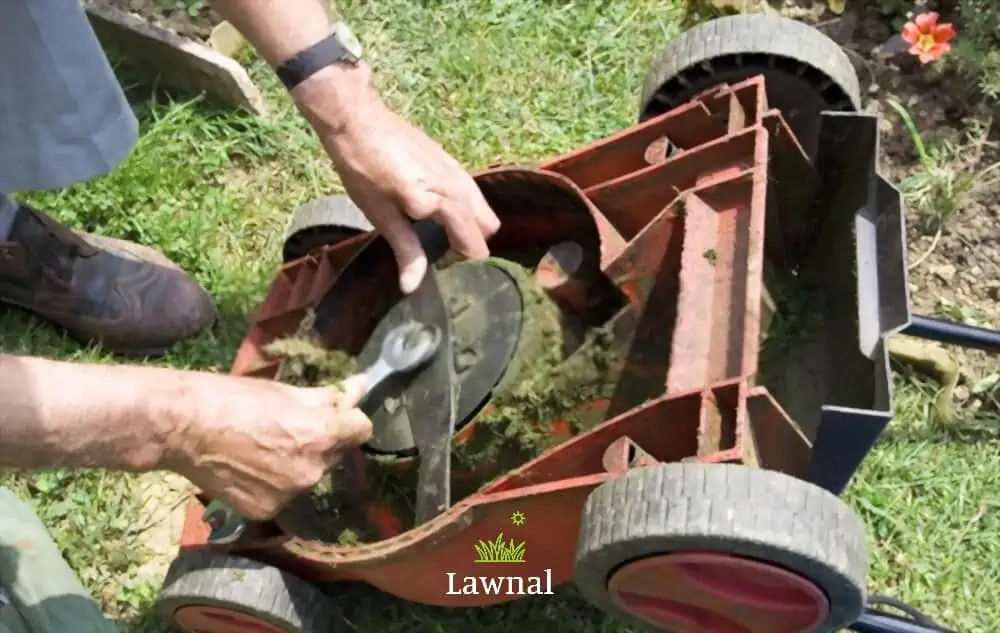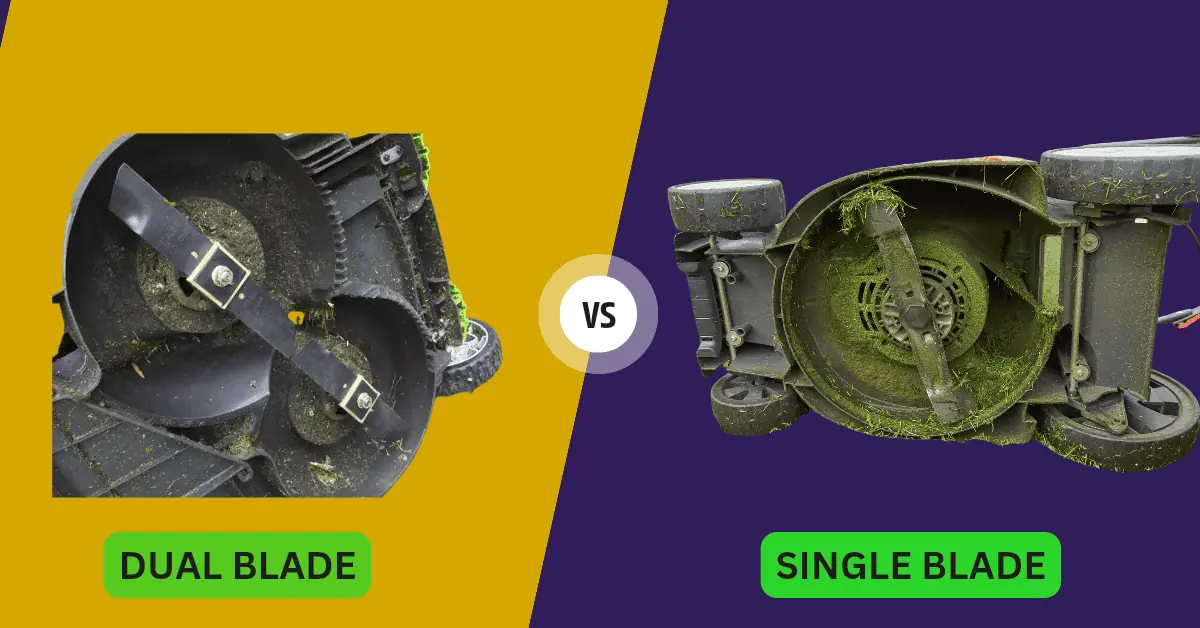One of the most popular gardening equipment is the lawnmower. Using lawnmowers ensures that your lawn gets a nice trim and looks neat and orderly. However, these mowers should be in perfect condition to finish any work. A way to ensure that they are great is by keeping your lawn mower’s blade sharp.
Keeping your lawn mower’s blades dry is necessary to ensure smooth operations and should be done at least once a year. Although this lawn care situation may seem a little needless, this process greatly streamlines your gardening routine.
This way, sharpening your lawn mower blades lets you cut grass swiftly and neatly, leading to a healthier lawn with a flawless trim. However, can you sharpen your lawn mower blades without taking them off?
This process is possible, and although this approach to removing the blades for sharpening is less common, it is still effective. This article will explain in detail how to sharpen lawn mower blades without removing them and essential tips to get it done as quickly as possible.
How often Should you Sharpen the lawnmower Blades?
Your mower’s blades’ requirement for sharpening depends on a few significant elements. This requirement would best serve the blade’s well-being if you continually kept them in mind.
However, the best method for keeping track of the blade condition is to examine them before and after each usage.
Frequency and Intensity
The frequency and intensity of your mower use are the most crucial and evident factors. Typically, you must sharpen your mower blade after operating it for twenty hours. Therefore, sharpening your mower’s blades after every twenty operations is necessary, particularly if you have a large lawn that requires an hour to trim.
After around forty uses, a modest yard that requires a half-hour to trim will need all of this effort. Generally, you must sharpen your lawnmower’s blades more regularly, depending on how often you cut your grass.
Age and General Condition
The age and general condition of your mower’s blades determine the frequency of sharpening. You can improve your mower blades’ longevity and effectiveness by clearing your lawn of rocks, leaves, and other hard things.
Before cutting, ensure your mower blades are checked and cleaned to avoid spreading dirt around and prevent unnecessary dulling from tearing through rocks or other tougher items.
You should sharpen the blades at the beginning of each mowing season. Most times, you should also do this at least once more throughout the summer.
How to Sharpen Lawn mower blades without Removing
To sharpen your mower blades while still attached, follow these instructions in the sequence indicated.
1. Planning
Obtain the necessary equipment and observe all safety measures before beginning the sharpening process:
- Tools: A metal-bladed angle grinder, a wooden block, a steel wire brush, a pail of water, or a flat-file
- Safety gear: Cut-resistant gloves and goggles
Place your lawnmower in a convenient location, such as an open, level area. You should take the spark plug out first. This way, you’ll be able to prevent unintentional starts.
2. Turn off the Power
Ensure you’ve unplugged the power supply for your lawn mower now before moving on. This process entails removing the battery or ensuring the cable is disconnected on electric mowers.
You only need to separate the spark plug hood from a place called the spark plug if you use a gas mower. By doing this, you can prevent unexpected mower starts.
3. Tilt the Lawn Mower
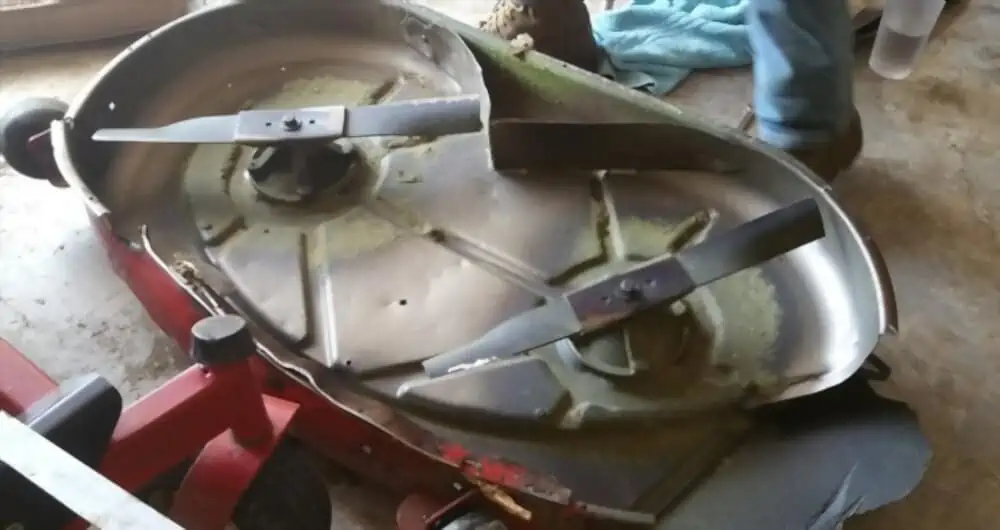
To reach the blade, tilt the mower sideways. The gasoline tank and carburetor should always be near the top of the mower whenever it is tilted. This prevents gas and oil from leaking into unintended locations and leaving storage tanks.
Put a hardwood block diagonally at the lawnmower’s opposite side to strengthen its stability while being raised. Before beginning work, check that the lawnmower is as steady as possible.
4. Keep the Blade From Moving
Use a different block to prevent the mower’s blade from moving once it is locked. The blade should only be capable of moving in a direction when ground or sharpened.
5. Clean the Blade
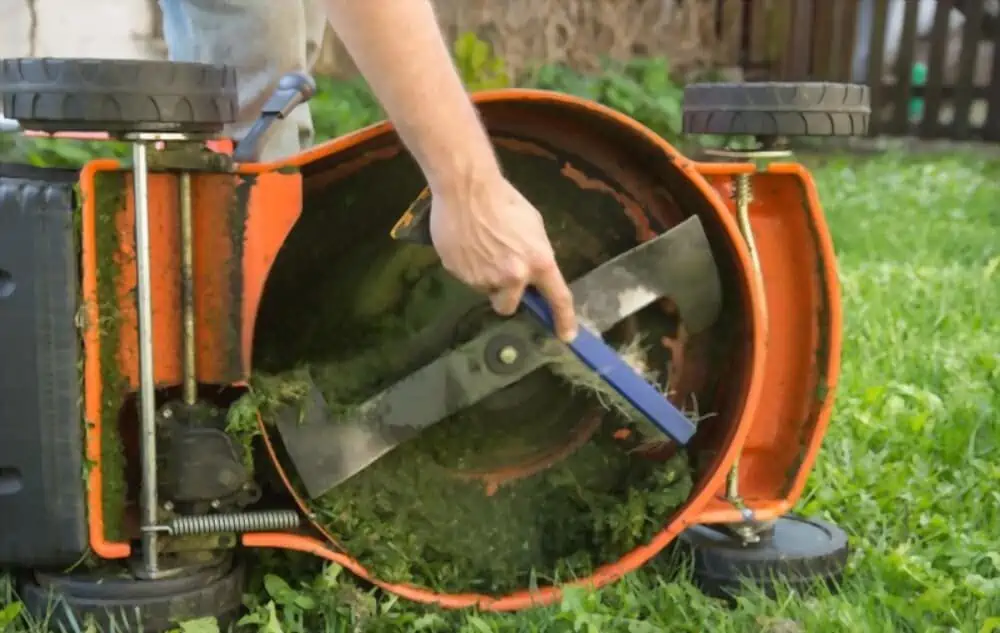
Clean the blade with a steel wire brush to eliminate any dirt or rust. If you notice any grass or dirt under the mower deck, remove it while you are at it.
Furthermore, remove debris and dirt from the lawn mower’s blades and beneath the deck using a pail of water, a brush, and a putty knife.
6. Sharpen
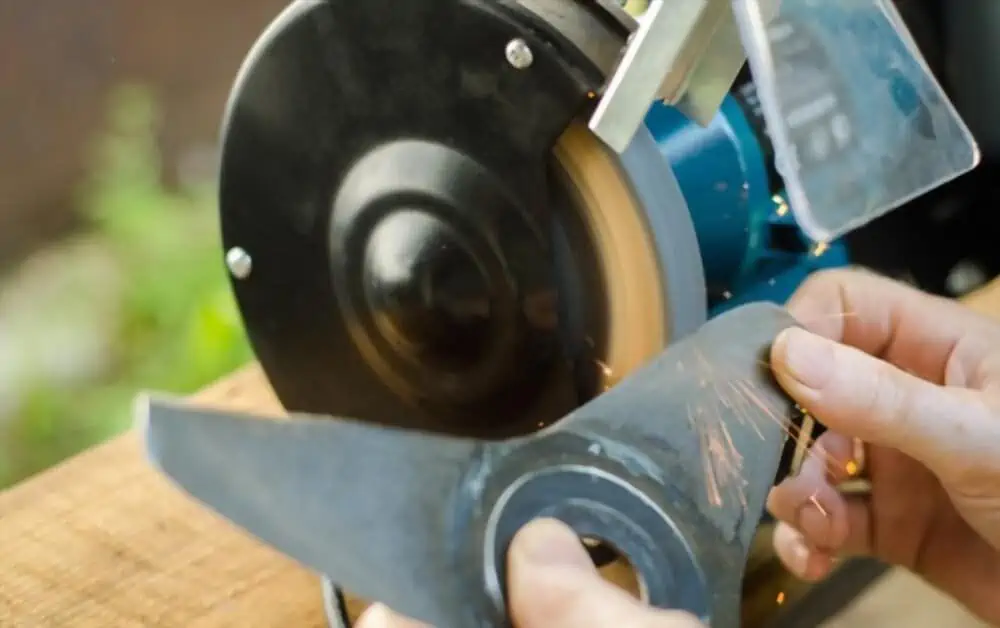
When you finish the first few processes, you can focus on the major duty, sharpening the blades. Depending on your comfort and availability of these tools, you can lay a metal file or a portable or electrical grinder over the blade’s cutting edge to complete this task. Keep in mind to constantly grind at an appropriate angle.
Once one side has been suitably sharpened, continue the task using the same technique on the opposite side. Since you won’t remove the blade from the mower, ensure you sharpen both sides equally.
Make careful you sharpen the top face of the blade during sharpening and only turn the grinder in one direction. This instruction implies that you’ll elevate the grinder each time you sharpen rather than going back and forth.
We recommend that you grind softly and use the whole length of the grinder or file with each stroke rather than trying to grind quickly or vigorously. Therefore, when moving the grinder, attempt to achieve a 45-degree angle on the top edge.
Useful Mower Blade Sharpening Tips
Follow a few essential guidelines if you’re determined to sharpen a lawn mower blade while keeping them intact. These tips are necessary to ease the operation process. Some of these suggestions are;
- You Should Only Sharpen Mower Blades When the Gas Tank Is Empty: Ensure the gas tank is empty before grinding the blades to eliminate fuel loss.
- Recognize When the Blades Are Rusty: You could examine the lawn blades on the mowed line and look for indications of rips and splits at the tips to determine if the blades have dulled.
- Know When To Replace the Blades: Replace the mower’s blade if it feels imbalanced, crooked, heavily nicked, or the driveshaft hole looks destroyed. This process is due to the blades becoming irreparably damaged, which makes them less useful for mowing your grass.
- Fix the Nicked Blades: The lawn mower blades may still function well despite having nicked blades. This opinion is untrue, as you may apply nickel to the sharpened blades. For optimal results, we recommend a bench grinder.
- Ensure the Blades’ Proper Balance: If the blades are not correctly balanced, strange noises will emanate beneath the lawn mower’s deck.
Conclusion
Understanding how to sharpen your mower’s blade using a suitable technique is essential for maintaining the beauty and wellness of your lawn.
Additionally, because using this approach to sharpen lawn mower blades is simple and easy, there is a high guarantee of the health of your grass.
